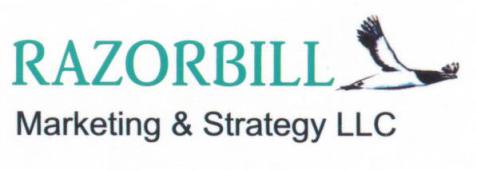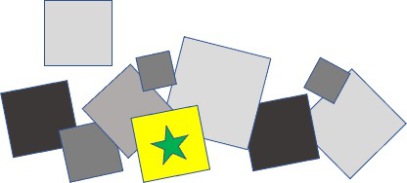Insights
So what’s unique about your product/ service/solution… ?
I recently conducted research for a client on available marketing technology solutions to meet their interests. On interviewing several providers, I concluded each interview with the question, “So what makes your product the best in this space?”. Surprisingly, none had a concise and clear answer wrapped in unique competitive advantage (UCA). The responses were descriptive of their offering or spoke to market share and customer satisfaction, but were lacking the singular element of competitive distinction.
On a broader perspective, elevator pitches are meant to quickly frame (and promote) products and services in a manner that can be digested, understood, and shared. They’re critical to business success, yet not widely adopted and used by staff … even in sales and marketing circles. A wobbly description won’t build distinction, confidence and credibility. UCAs are an important component.
I learned from a senior leader years back (oddly, one who came up previously in a commoditized CPG space) a lesson on constructing pitches. They’re brief, clear, and contain 3 components:
1) Describes the solution’s purpose (“Acme Squeak-Ban solves the problem of squeaky hinges”)
2) Quickly outlines function (“Squeak-Ban supplies long lasting lubricant to reduce friction through a micro-applicator that doesn’t allow
for dripping on rugs or flooring”)
3) Objectively states unique competitive advantage. (“Lab tests show that Squeak-Ban lasts 30% longer in hinges than competing
products”)
On describing purpose, it’s important that the audience clearly see the problem being solved, and ideally a problem with which they have experience. The problem statement can be tailored to the audience. Interestingly, the “verticalization” of solutions can deliver greater traction, even if the underlying product or service is identical from one vertical to the next. Prospective buyers want to know you understand their unique challenges. Acme Squeak-Ban may also work wonders in avionics applications and can be positioned as such when speaking with an aircraft maintenance client. Tie the product to the problem of the audience.
Describing function requires clarity and brevity. While products and services may have pages and pages of feature descriptions, the elevator pitch is a time for simple functional description. You’re building curiosity, not writing a detailed product document.
Most importantly, the unique competitive advantage is your opportunity to establish distinction in a product or service market that may be crowded with competition. Never (ever) exaggerate benefit, but do be as objective and clear as you can be as to why your product is a better choice than others. This is not the time to denigrate the competition, rather, focus on the elements that make your solution best (if there are none, that’s a bigger problem!). Those advantages aren’t always technical … they can be price, quality, availability, tech support, ease of use, and so on.
A clear elevator pitch should be shared and understood by all members of the enterprise, it’s not just a sales and marketing mantra. It may or may not be the center of the brand story, but should certainly echo a well-established brand.
Finally, and most importantly, the pitch must be true. Ideally, sales and web collateral will repeat the pitch and offer case studies that support the story. Case studies should follow a similar template: 1) Problem to be solved, 2) Solution applied, and 3) Objective results (reflecting the UCA as much as is practical). Customer and client testimonials to the results are also a boon.
Consider an assessment of the elevator pitches used across your products and services. Are they familiar to all enterprise stakeholders? Can they quickly be shared? Are they clear and credible? If not, opportunity awaits!
A. Roussel 1/22
Copyright Razorbill Marketing and Strategy LLC
Thoughts on Product Management - Mind the Gap(s)!
Little in business is more exciting than early-stage product planning, particularly with the “top of funnel” work involving opportunity assessment and strategic planning. It’s a time of promise and wide-open spaces, allowing teams to imagine and engineer what may lead to great success, recognition, and reward, whether measured in profitability and market share, or even less quantifiable benefits in brand strength, social change or environmental impact. There’s a palpable air of optimism in the early days and weeks. Stakeholders and other colleagues often feed that optimism with encouragement and support. The best brain-storming discourages negative assessments during ideation.
As strategic planning and assessments evolve, the tendency to focus only on product opportunity can shade the view on why a product might not succeed. There’s not much joy in dwelling on why a product can fail, when all energy is applied to scoping success. However, assessing those hurdles and gaps early in process can clear the path ahead and boost likelihood of success (without focusing on hurdles so much that innovation stalls).
A key question during market research … something that should continue throughout assessment and development … is “Why wouldn’t you adopt this?”. Surprising responses are likely to be generated, from insiders that may at first be encouraging on the prospective product or service, but have insights on alternatives or barriers that can trip up adoption. More valuable are the insights from the target market audience that can expose unseen traps. If research leans entirely on “Do you find value in this prospective solution”, without probing possible adoption objections, considerable resources can be spent in building momentum without evaluating modifications that would bridge gaps on the future path to success.
We’ve all seen products and businesses launch that failed to reach potential. Sometimes, we may wonder if any research was conducted prior to launch at all. Simple examples are restaurants or retail sites opened in very saturated or low traffic locations (how many dry cleaners does this block need?) or clever solutions in search of a problem (consolidated payment cards, eventually succeeding in the form of mobile pay). That’s not to suggest that the offer doesn’t meet or exceed the experience, quality or price expectations of buyers, but initiating a product or service already with adoption headwinds only diminishes the chance of success.
“Why wouldn’t you adopt this?” can bring to view alternatives already available and perhaps already installed, discouraging a potential buyer from adding cost with no marginal benefit. In the business services space, if a new product or service doesn’t relieve staff of workload, then the ROI becomes suspect.
“Why wouldn’t you adopt this?” can expose a lack of depth in the value proposition, even with agreement that the proposition is credible. “Our product will achieve the highest quality level in the industry for color consistency” may mean little if product performance is what really matters. Function may be more the priority than form or vice versa.
“Why wouldn’t you adopt this?” may show the gap between curiosity in clever technology and potential for everyday utilization. 3D TV comes to mind … while adding to the viewing experience, having to wear tech when all I wanted to do was flop on the couch and stream something quick was a broken value prop.
“Why wouldn’t you adopt this?” may bring to light long-standing relationships that will be difficult to break without an overly compelling competitive difference, particularly where a product space suffers from commoditization or long on-boarding processes. Fear of adopted risk may also require unusual guarantees to gain ground.
The question should also be used with investor assessments, through testing trusted stakeholders with “Why wouldn’t you invest in this?”. There may be enough complexity and potential failure points to dissuade initially interested parties, once the curtains are pulled back and product or service details come to light. Investors have a choice on where to place bets ... and uncertainty translates to greater risk.
So, what does a product team do with the responses collected through market assessment … the voice of customer (VOC) input collected in early stages and over the life of product? Use that insight to:
- Design around or accommodate barriers where practical and reasonable
- Ensure that value propositions and positioning statements dispel concerns rooted in uncertainty. Address objections up front
- Remove complexity, where possible, and help prospective customers to envision their own success
- … and sometimes … back down and reassess, the most difficult decision to make for a team pursuing success, reward and recognition
Product teams can be averse to envisioning failure … it just seems to fly against the mission. Not doing so, however, removes the opportunity to shrink the likelihood of those failures through a focused and deliberate methodology. Mind the Gap(s).
A. Roussel
1/5/2022
Copyright Razorbill Marketing and Strategy LLC



